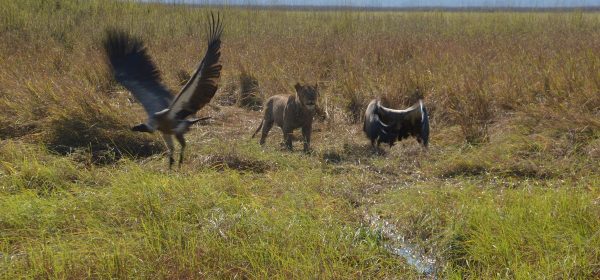SELECTED ARTICLE FROM OUR SPECIALISTS
Zambia Kafue Visit June 2018
June is one of my favourite times of year in this part of Africa. Lovely warms sunny days with temperatures in the mid-twenties are complimented by cool evenings. Colours are still bright and the bush still green following the rains which usually finish around March.
By June, dwindling water supplies are drawing the wildlife closer to Zambia’s beautiful rivers providing excellent and easily accessible game viewing.
On this trip we visited Zambia’s three best known reserves, South Luangwa National Park in the East, Lower Zambezi in the south and Kafue in the centre area.
Compared to other top safari locations, Zambia’s parks are relatively unknown, visitor density is low and there are just a few relatively widely spaced safari camps, particularly outside of the central Mfuwe area of South Luangwa so you really do feel as though you are pioneers in wild Africa.
KAFUE NATIONAL PARK
Kafue is Zambia’s largest and one if the biggest National Parks in Africa. Kafue has a wide range of habitats including woodland, open areas, several wild rivers, the Nanzhila plains in the South and the spectacular Busanga Plains in the North. Safari camps here are widely spread throughout the park and, except for the central area close to the main road that bisects the park, one is unlikely to see many other vehicles.
Activities here are day and night game drives, guided walks, boat safaris and fishing.
This is probably not a park for first timers as wildlife, although plentiful in some areas can be more elusive than in other parks and in certain areas the Tsetse flies are a nuisance.
The biodiversity in Kafue is greater than in the other parks and includes, cheetah, red lechwe, hartebeest, roan and sable antelope are also common. A first for me here was the bushpig, similar to the European wild boar. Other animals I have rarely seen elsewhere included lesser bushbaby, oribi and Sharps grysbok.
Birders will love it too with unusual birds such as the black cheeked lovebird, Pels fishing owl and the secretive African finfoot among the specials.
Fishing in the pristine Kafue river is also reputed to be extremely good.
As time was limited we concentrated on the Central and Northern Areas of the reserve on this trip starting at the new Ila Safari Lodge close to the main road. The wildlife in this area is more used to vehicles than further north and so unsurprisingly more relaxed. We did see some lions here and heard them roaring throughout the night unfortunately we did not have time for a full game drive or boat trip on the Kafue River. The lodge itself was very comfortable a great value.
We then headed North to Musekese Camp which is run by a couple of highly dedicated and enthusiastic young guides, located in a previously undeveloped section of the reserve known locally as Eden for its profusion of wildlife. Whilst definitely more rustic than the other properties we visited, we think true safari enthusiasts will love it, there is great game viewing in the Eden lagoon opposite the camp and also on the river and no neighbours nearby to spoil the exclusivity of it. Guests usually access the camp by boat. Lions could be heard roaring all night.
Our final destination, the Busanga Plains, holds a special place in the hearts of many real wildlife enthusiasts. It remote location and inaccessibility for most of the year due to seasonal flooding make Busanga a relatively untouched wilderness, teeming with abundant and unusual wildlife.
In June the first safari camps are just opening for the new season which begins in earnest in July. The area is still very much a wetland and access to some camps including those we stayed at is by Mokoro.
Activities in June include limited day and night game drives and boat safaris. Due to water levels at this time of year, the prevalent species are of the water loving variety lechwe, puku, buffalo, elephant, rare sitatunga and of course numerous hippo and crocodile. There also quite a few lions hunting on the plains and we saw them daily and heard them every night. Later in the year many other species migrate to the rich grazing and the full range of Kafue’s wildlife can be easily seen on the treeless plains.
Birding is also very good with one of the highlights being the wattled crane, a large bird known for its extravagant courtship dance.
The highlight for me was watching two large male lions who had killed a buffalo defending there kill from the hundreds of Vultures who were on the scene awaiting their chance.
From a visitors point of view I would suggest visiting Busanga a bit later possibly between August and September when the game viewing is much more diverse and more extensive game drives possible.
A bonus is that there do not appear to be Tsetse flies on the Busanga Plain.
Favourite camp – Musekese for its unusual and varied wildlife and rustic simplicity with the luxury Shumba Camp on the Busanga Plains a close second.
 Just a phone call away to start planning your holiday
Just a phone call away to start planning your holiday
01 664 464 228


